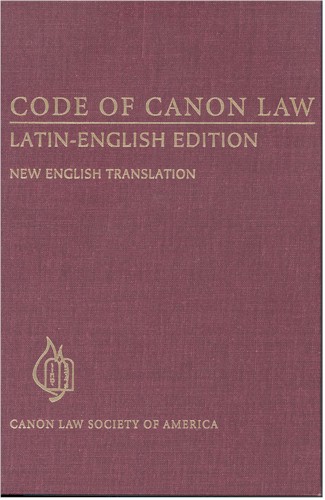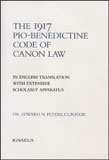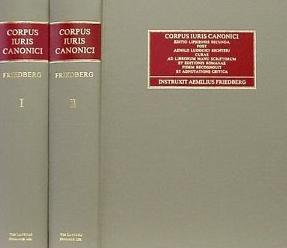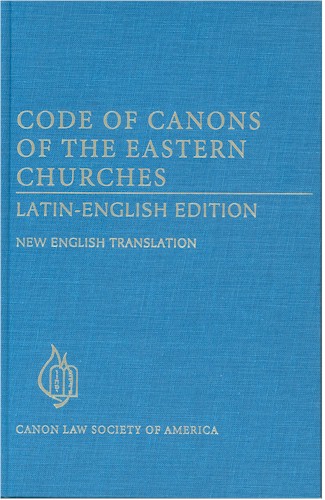|
To work for the proper implementation of canon law is to play an extraordinarily constructive role in continuing the redemptive mission of Christ. Pope John Paul II |
|
|
|
|
Resolution 1152 x 864 |
Updated 3 jan 2013 |
Catechetical Issues Related to Annulments |
|
Edward Peters, "Catechetical issues related to annulments", Catholic Faith (May-Jun 1998) 18-20. |
Catechists who prepare adults for entrance into the Church need a good
understanding of annulments (technically: “declarations of matrimonial
nullity”) for at least two reasons.
First, virtually all adults seeking to enter the Church have heard of annulments, but most of them labor under one or more serious misperceptions about the process and its purposes. In particular, because of the great increase in the number of annulments being declared by tribunals, questions might be raised about the Church’s commitment to permanent marriage. It is important, therefore, to correct any misunderstandings about annulments before they result in confusion about Catholic teaching on sacramental marriage. Second, many adults
considering conversion to the Catholic Faith are already divorced and remarried. Among Catholics, such status, although it no longer results
in excommunication, is considered objectively gravely sinful and prevents
participation in the Eucharist. Similarly, it would be self-defeating to
welcome converts into the Church, only to then immediately tell them that,
because they are remarried after a civil divorce, they cannot take Communion in
the Church they just entered. Thus the matrimonial status of
divorced-and-remarried candidates must be assessed before their entering the
Church.
In this article we
will look at some of the more common issues encountered by catechists regarding
annulments. Keeping in mind that most adults seeking to enter full communion
with the Church are already baptized, we will focus on questions related
to the marriage cases of the baptized. Even so, however, we must still limit this
discussion to those marriage cases which are not complicated by unusual factors
such as non-consummation of the marriage or presumed death of a spouse.
What is an Annulment?
The most common
misperception among potential converts regarding annulments is that a
declaration of matrimonial nullity is simply a Catholic divorce. Obviously, and
without denying certain similarities which do exist between divorce and
annulments, catechists need to draw clearly the crucial differences between the
two. Briefly, a divorce, at least as far as civil law is concerned, ends a
marriage which was in existence. In contrast, an annulment declares that what
appeared to be a marriage was, from a ecclesiastical point of view, never a
marriage in the first place. The Catholic Church,
relying on the teachings of Christ, holds that the marriages of the baptized
last until death (Canon 1056). The Church, therefore, unlike the state, does not
regard the existence of a civil divorce as sufficient to allow a divorced person
to marry again during the lifetime of the first spouse. In order to enter what
can be recognized by the Church as a marriage, a divorced person must demonstrate the invalidity of the earlier marriage. The process whereby the
possible invalidity of the earlier marriage is examined is the annulment
process. Annulment cases can only be heard by ecclesiastical authorities,
usually a diocesan tribunal, and are conducted in accord with Church law (Canon
1671).
Broadly speaking,
every annulment case comes down to three (or six, if you prefer) questions
(Canon 1057): did each of the parties have what canon law considers to be
capacity for marriage at the time of the wedding?; did each of the parties
express consent to marriage as the Church proclaims it?; and finally, did each
of the parties observe whatever level of form might have been required for
marriage at the time? — although in non-Catholic weddings, this last requirement is
usually very easily satisfied and hence rarely serves as a basis for nullity.
Now, canon law
presumes that both parties had capacity for marriage at the time of the wedding
and it presumes that both parties expressed consent to true marriage (Canons
1058, 1060, & 1101). But, if it can be proven that either or both parties lacked
capacity for marriage or that either or both parties did not consent to marriage
as the Church understands and proclaims it, then such a marriage can be declared
ecclesiastically null.
Sometimes a divorced
person can demonstrate that the failed marriage was null by ecclesiastical
standards; sometimes not. The mere fact, however, that there has been a sharp
rise in the number of broken marriages which have been declared canonically null
does not mean that annulments can be obtained simply by doing the paperwork
correctly. Each marriage nullity case is heard separately and on its own merits,
and the number of rejected annulment petitions is undoubtedly higher than most
people believe.
The Catechist’s Role
Catechists should
try to make clear that annulments are regarded by the Church as exercises in
justice, not charity. In other words, annulments are declared when, and only
when, the parties meet the objective canonical requirements for nullity.
Annulments are not
given out because tribunal judges feel sorry for certain people (even if such
people are clearly sympathetic characters), nor are an annulment petitions
rejected because tribunal officials suspect (even if accurately) bad-will on the
part of one or both parties. Admittedly, most of the parties involved in
annulment cases are pleased when nullity petitions are approved because it will
make possible (for both parties) a marriage in the Church. But the fact that
most people want their nullity petitions approved does not mean that approval of
the petition is the correct result. The tribunal process has not necessarily
failed when an annulment petition is denied; the process has not succeeded just
because a nullity petition is approved. Annulments are to be declared when the
requirements of canon law are met. They are to be declined when the requirements of
canon law are not met.
Converts, Marriage, and Annulments
It is not unusual
for potential converts to the Faith, upon learning that their marriage history
might impede their entrance into the Catholic Church, to wonder why the Church
is even interested in their earlier marriage(s) in the first place. They might
feel that they are unfairly being held to standards that did not apply to them
at earlier times in their lives. A couple of observations are in order here.
On the one hand, for
example, the requirements of canonical form (what Catholics refer to as
“getting married in the Church” according to Canon 1108) are not applied to
Protestants. While the violation of canonical form can (and, some 15,000 times a
year, does) result in the nullity of the marriages of Catholics, Protestants
need not comply with Catholic laws on canonical form and in that regard they are
not being held to that Catholic standard for marriage. Of course, because they
are not bound by canonical form, Protestants cannot use the fact that they were
married, say, in front of a civil magistrate, as proof of the invalidity of
their marriage.
On the other hand,
some aspects of canon law on marriage are applied to Protestants. To take an
obvious example, biological brothers and sisters are canonically incapable of
marrying each other, regardless of their religious affiliation (Canon 1091).
Such attempts at marriage would be invalid under canon law for Catholics and
Protestants alike. Notice, however, that what is at issue in a case like this is
not simply a matter of canon law, but one of Divine Law, to which the Church
believes all baptized persons are bound. Indeed, when looked at carefully,
nearly all of the “Catholic” marriage requirements which are applied to
Protestants will be seen to be based on natural or Divine Law.
There are,
nevertheless, some significant areas in which Catholic teaching on marriage is
applied to Protestants, despite the interdenominational differences which exist
on certain points. Let us look at just one, namely, intentions regarding
permanence in marriage.
All major Protestant denominations discourage divorce, some of them quite strongly. But none of them currently takes the position of the Catholic Church on divorce, to wit, that remarriage is impossible during the lifetime of one’s former spouse. Now, prescinding from whether our cradle Catholics have been adequately educated on this point, it is an accepted part of canonical jurisprudence that anyone who deliberately excludes the intention of remaining in a lifelong marriage attempts marriage invalidly. Therefore, it is possible that the marriage of a Protestant which has ended in divorce can also be declared canonically null based on the fact that the Protestant rejected what the Catholic Church considers to be a true marriage. How? By it being proved that at the time of the wedding the Protestant, quite understandably perhaps, rejected a major facet of the Church’s teaching on marriage (Canons 1056 & 1101). Obviously, great care is taken in hearing nullity cases on these or similar grounds and, as noted above, canon law presumes that all persons consenting to marriage consent to marriage as the Church understands and proclaims it. But such presumptions can be, and sometimes are, overturned in particular cases, resulting in a declaration of matrimonial nullity.
As most catechists know, many people seeking admission to the Church were first attracted to the Church by the strong stand she has taken in defense of innocent human life, her opposition to divorce, and her advocacy of marriage and family life values. I hope the above observations will help catechists allay the fears of some that, through her practice of annulments, the Church is wavering in her proclamation of “marriage until death do us part.” At the same time, however, catechists should feel confident in guiding to the proper ecclesiastical offices those candidates for conversion who are in irregular unions, knowing that the opportunity to have an accurate canonical determination of their true matrimonial status is available.
|




